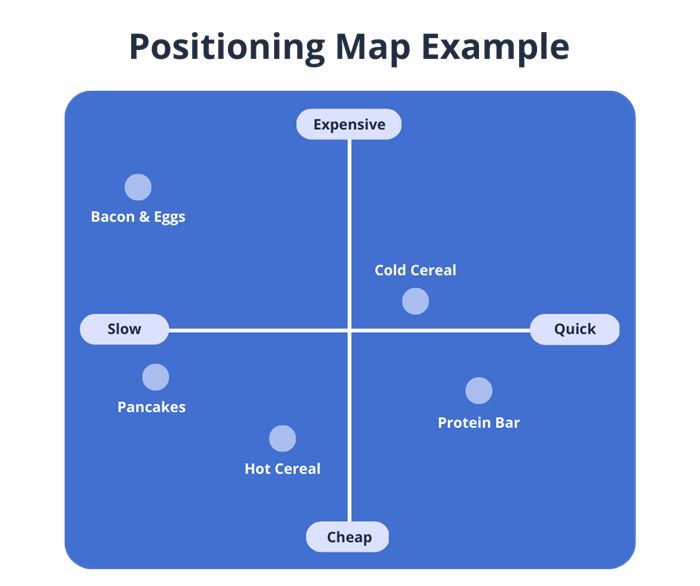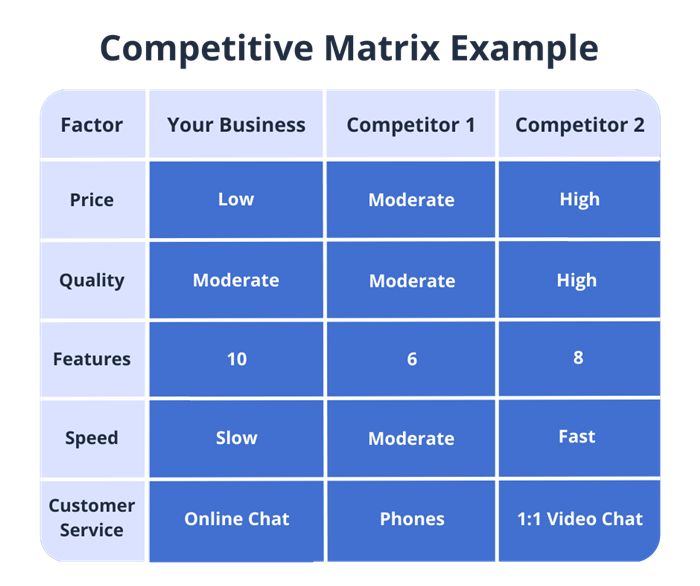How to Write a Competitive Analysis for Your Business Plan
Do you know your competitors? Have you conducted a thorough competitor analysis?
Knowing your competitors, their operations, and benchmark requirements is crucial for your business’s success. Investors also expect to see a competitive analysis in your business plan.
In this guide, we’ll explore the significance of competitive analysis and provide essential steps to conduct and write your own analysis.
You’ll learn how to identify and evaluate competitors to better understand business opportunities and threats. We’ll also provide a four-step process to describe and visualize how your business fits into the competitive landscape.
What is a competitive analysis?
A competitive analysis is the process of gathering information about your competitors to identify their strengths and weaknesses. This information helps you develop strategies to improve your own business and gain a competitive advantage.
How to conduct a competitive analysis
Before writing about the competition, you need to conduct an analysis. Here are the steps:
1. Identify your competitors
Create a list of direct and indirect competitors in your industry or market segment. Direct competitors offer similar products or services, while indirect competitors solve the same problems with different products or services. Keep this list updated with any new entrants or changes to current competitors.
2. Analyze the market
Study the overall market, including size, growth rate, trends, and customer preferences. Understand the key drivers of demand, demographic and psychographic profiles of your target audience, and any market gaps or opportunities. This research is valuable for multiple parts of your business plan.
3. Create a competitive framework
Establish criteria for comparing your business with competitors. Use metrics and information to answer specific questions such as customer overlap, offered features, and served customer numbers. Factors to consider include market share, product/service offerings, pricing, distribution channels, target markets, marketing strategies, and customer service.
4. Research your competitors
Gather information about your competitors using competitor websites, social media, customer reviews, industry reports, press releases, and financial statements. Conducting primary research by interviewing customers, suppliers, or industry experts can also provide valuable insights.
5. Assess strengths and weaknesses
Evaluate each competitor based on established criteria. Identify their key strengths and weaknesses.
6. Identify opportunities and threats
Based on competitor strengths and weaknesses, identify opportunities to outperform them and threats where they may outperform you.
How to write your competitive analysis
After conducting research, present your findings in your business plan. Follow these steps:
1. Determine your audience
Consider who will read the business plan and format the competitive analysis accordingly. For an internal plan, focus on comparative strengths and weaknesses to develop strategies. When presenting to potential investors or for a bank loan, provide a clear understanding of competition, showing awareness and positioning for advantages.
2. Describe your competitive position
Compare your business with competitors based on the values offered to the target market. Identify competitive advantages, weaknesses, and areas for improvement. Clearly define your positioning in relation to other offerings.
3. Visualize your competitive position
Use a positioning map or competitive matrix to present your competitive framework. A positioning map plots two benefits on a horizontal and vertical axis, helping to visualize the combination of factors. This chart visually represents how your business and competitors fit within the market.
By following these steps, you can write a comprehensive and impactful competitive analysis for your business plan.

It’s common to see the price and an important qualitative factor plotted on an axis, assuming a relationship between price and quality.
Contents
Competitive matrix
Most business plans include a competitive matrix, which compares competitors based on identified factors.
How do you compare to others? Here’s a typical competitive matrix.

I’ve reviewed the provided text and made the necessary revisions to reduce redundancy and enhance clarity without altering the original meaning. Here’s the refined version:
I’ve seen numerous competitive matrices in plans and pitches, and they all demonstrate that this company fulfills market demands better than others. This suggests something about credibility and how to increase it. However, the matrices I’ve encountered are always associated with seeking investment, so perhaps that’s part of the nature of the game.
4. Strategies for gaining a competitive edge
Your business plan should also outline the strategies your business will employ to capitalize on opportunities and mitigate threats from competition. This may entail improving your product/service offerings, targeting underserved market segments, offering attractive price points, focusing on superior customer service, or developing innovative marketing strategies.
While you should discuss these strategies in the competition section, further elaboration is required in other areas of your business plan.
For instance, your competitive analysis reveals that most competitors offer the same features. As part of your strategy, you identify several ways to better serve your target market through additional product features. These details should be referenced in your products and services section to support your problem and solution statement.
Why competition is beneficial
Many business owners desire a lack of competition, believing they would then dominate the entire market for their product or service. However, this is not the case—especially for startups with truly innovative offerings. Here’s why:
Competition validates your idea
A good idea is identified when others are developing similar products or services. Competition confirms the existence of a market and potential customers for your new product. It also reduces the costs associated with marketing and educating your target market (see next point).
Competition educates your target market
Being the first to market can be advantageous but also requires significant spending to educate customers about your new widget, problem-solving solution, or innovative services.
This is especially true for highly innovative businesses that introduce customers to a solution they didn’t even know existed, let alone that they needed. As a first-to-market company, you face the challenge of educating consumers—a process that is often expensive and time-consuming. The second company to enter the market benefits from an educated consumer base without incurring significant marketing expenses.
Competition promotes progress
Businesses with little to no competition tend to stagnate. In the absence of alternatives, customers have no incentive to choose differently, and innovation suffers. Consistent competition guarantees that your marketplace evolves, compelling your product offerings to evolve with it.
Competition drives focus and differentiation
In the absence of competition, it’s easy to lose focus on your core business and customers and expand into areas unsuitable for your target market. Competing forces you and your business to differentiate yourselves while focusing on customer needs. Over time, competition helps build a better business.
What if there is no competition?
A common mistake made by new businesses is assuming that having no direct competitors guarantees success. If you struggle to identify competitors, consider the following:
Is there a valid reason for the absence of competitors?
Ask yourself why no one else is offering the same product or service. It’s possible that there’s no market for it. Conduct market research, talk to people, and determine if there is a customer base for your offerings.
However, the absence of direct competition does not imply a complete absence of competition.
How are customers currently fulfilling their needs?
While there may not be a nearby shop selling cod-liver frozen yogurt, customers might be purchasing cod-liver oil online to make their own frozen yogurt at home. Alternatively, your potential customers may be consuming frozen salmon pops.
Are there any businesses indirectly competing?
Competition isn’t limited to businesses providing the exact same products or services as yours. Consider existing market alternatives that your product or service would displace.
It differentiates direct competition from indirect competition. When Henry Ford began mass-producing automobiles in the United States, he didn’t have other automakers to compete with. Instead, his competition was horse-and-buggy manufacturers, bicycles, and railroads.
Perform a competitive analysis, but stay focused on your planning
While understanding your competition is crucial, don’t get too absorbed in research.
If you merely track and analyze your competition endlessly, you’ll struggle to generate original ideas. Consequently, you’ll resemble and imitate your competition. Instead, make a habit of avoiding visits to your competitors’ websites, stores, and sales offices.
Focus instead on providing exceptional service and engaging with your customers. Determine how you can better serve each customer, transforming them into loyal patrons, references, or sources of referrals.
Excessive focus on your competition results in becoming a copycat. Consequently, whether customers walk into your store or the competition’s, it won’t matter—because you’ll both be the same.
Hello!
I’m Andrew Brooks, a seasoned finance consultant from the USA and the mind behind phonenumber247.com.
My career is built on a foundation of helping individuals and businesses thrive financially in an ever-changing economic landscape. At phonenumber247.com, my aim is to demystify the complex world of finance, providing clear, actionable advice that can help you navigate your financial journey with confidence. Whether it’s personal finance management, investment strategies, or understanding the nuances of market dynamics, I’m here to share insights and tools that can propel you towards your financial goals.
Welcome to my digital space, where every piece of advice is a step closer to financial clarity and success!
